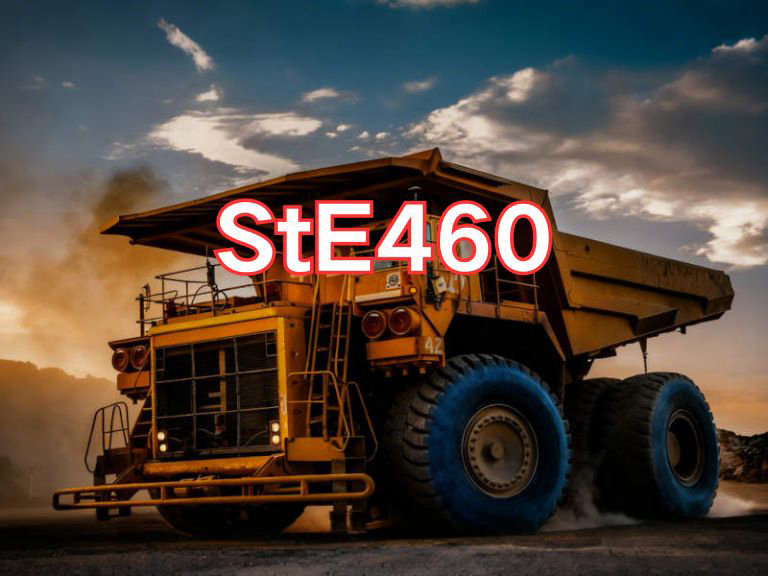

S355J2
S355J2 is a high-strength, non-alloy structural steel, with its designation following the European standard EN 10025-2 naming system. In this system, "S" stands for "Structural steel," indicating that it is designed for load-bearing and engineering structures; "355" refers to the specified minimum yield strength of 355 MPa at room temperature; "J2" denotes the impact toughness grade, where "J" indicates Charpy V-notch impact testing, and "2" specifies a test temperature of -20°C with a minimum absorbed energy requirement of 27 joules (J). Therefore, S355J2 is a hot-rolled structural steel that maintains good toughness at low temperatures. Compared to S355JR (tested at +20°C) and S355J0 (tested at 0°C), S355J2 offers superior low-temperature toughness, effectively resisting brittle fracture in cold climates or under dynamic loading, making it suitable for applications with higher safety and reliability requirements.
The main characteristics of S355J2 steel plate include a combination of high strength, excellent low-temperature toughness, and good weldability. Its tensile strength typically ranges from 470 to 630 MPa, with good elongation, ensuring structural integrity under complex stress conditions. Thanks to its strictly controlled carbon equivalent, the steel exhibits excellent weldability and is compatible with various welding processes such as MAG, SAW, and TIG. The weld heat-affected zone is resistant to cracking, and welding can generally be performed without preheating or with only minimal preheating, simplifying fabrication. Additionally, S355J2 offers good cold-forming properties, making it suitable for bending, stamping, and other forming operations, widely used in manufacturing complex structural components.
S355J2 is extensively used in bridges, high-rise buildings, industrial facilities, cranes, transmission towers, construction machinery, railway vehicles, offshore platforms, and various steel structures operating in cold regions. It is particularly suitable for critical load-bearing components exposed to harsh winter conditions or low-temperature service environments, serving as a key material for ensuring structural safety.
The current standard for S355J2 steel plate is EN 10025-2:2019, titled Hot Rolled Products of Structural Steels – Part 2: Technical Delivery Conditions for Non-Alloy Structural Steels. Published in 2019, this version supersedes the previous EN 10025-2:2004 and represents the latest international specification. It specifies detailed requirements for chemical composition, mechanical properties, impact testing at -20°C, dimensional tolerances, and inspection procedures. As a key grade in the European structural steel system, S355J2 plays a crucial role in enhancing structural safety in low-temperature environments and is an essential high-performance material in modern advanced engineering designs.

Ultrasonic Testing (UT)
A key non-destructive testing technique that uses high-frequency sound waves to detect internal flaws in steel plates. The probe emits sound waves, which reflect when encountering defects such as cracks or inclusions. The receiver captures the echoes, enabling precise determination of defect location and size. With high sensitivity, strong penetration, and fast inspection speed, UT effectively ensures internal quality, widely used in the production of heavy plates, pressure vessel plates, and other high-end products to guarantee safety and reliability.

Magnetic Particle Testing (MT)
A common surface inspection method that magnetizes the workpiece, causing leakage magnetic fields at surface or near-surface defects like cracks or inclusions, which attract magnetic particles to form visible indications. Simple to operate and highly sensitive, MT is suitable for rapid inspection of surface and near-surface flaws in ferromagnetic materials, widely used for online or offline inspection of plate edges, ends, and welds, ensuring product quality and safety.

Penetrant Testing (PT)
A non-destructive method for detecting surface-breaking flaws. A penetrant liquid is applied to the cleaned steel surface, allowing it to seep into defects such as cracks or pores. After removing excess penetrant, a developer is applied, causing the trapped penetrant to bleed out and form visible indications. Simple and cost-effective, PT is suitable for inspecting surface defects in various non-porous materials, commonly used for welds, castings, and complex components, effectively ensuring surface quality of steel plates.











